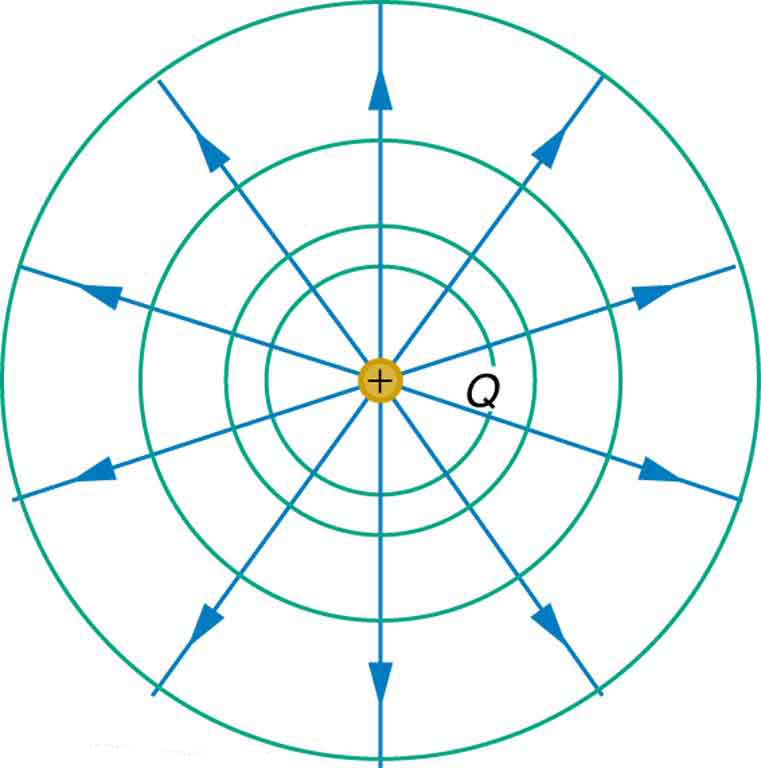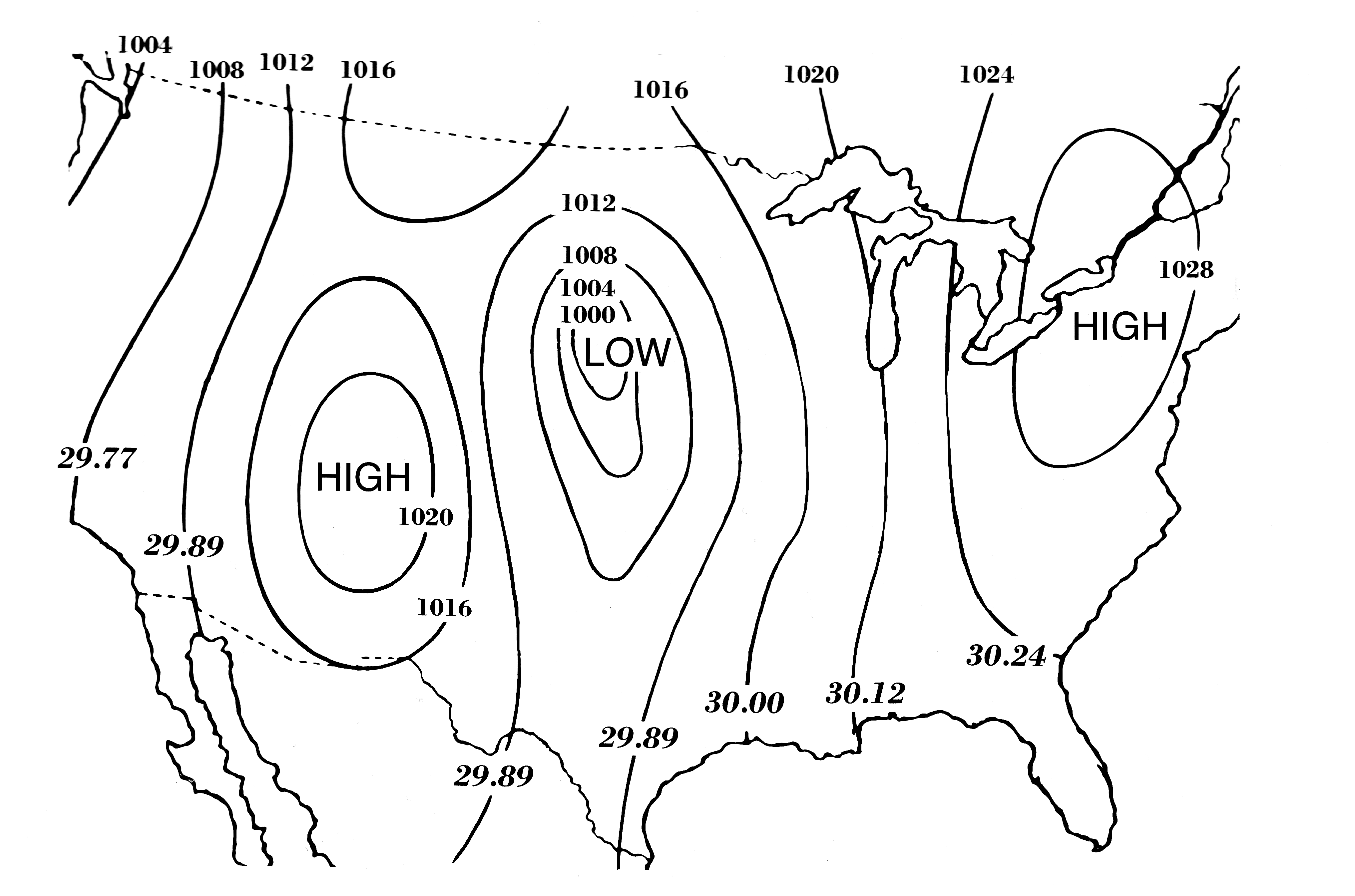K
Krish Gupta
Daniella Garcia-Loos
AP Physics 2 🧲
61 resourcesSee Units
Isolines and Electric Fields
Isolines, also known as contour lines, are lines that connect points of equal value in a scalar field. In the context of electric fields, isolines are used to represent points of equal electric potential.
Here are some key points about isolines as related to electric fields:
- Isolines in electric fields are called equipotential lines. They represent points of equal electric potential and are always perpendicular to the electric field lines.
- Equipotential lines can be used to visualize and understand the electric potential in a given region. For example, in a region with a uniform electric field, the equipotential lines will be evenly spaced parallel lines. In a region with a non-uniform electric field, the equipotential lines will be curved.
- Equipotential lines can be used to calculate the work done by the electric field in moving a charged particle from one point to another. The work done is equal to the change in electric potential energy, which is equal to the difference in electric potential between the two points.
- Isolines are an important concept in a variety of fields, including physics, engineering, and geography. They are used to understand and analyze how quantities change over a given area or region.
Potential Difference (Electric Potential/Voltage)
Electric potential and voltage are related concepts that describe the potential energy of a charged particle in an electric field.
Here are some key points about electric potential and voltage:
- Electric potential, also known as electric potential energy, is the potential energy of a charged particle in an electric field. It is represented by the symbol "V" and is measured in units of volts (V).
- Voltage, also known as electric potential difference, is the difference in electric potential between two points. It is represented by the symbol "ΔV" and is also measured in volts (V).
- Electric potential is determined by the amount of charge producing the field and the distance from the charge. The electric potential is higher the closer you are to the charge and lower the further away you are.
- Voltage is the difference in electric potential between two points. For example, the voltage across a battery is the difference in electric potential between the positive and negative terminals.
- Electric potential and voltage are important concepts in electromagnetism and are used to understand and analyze the flow of electric charges and the operation of electric circuits.
The equation for electric potential is derived based on the equation from electrical energy which we will learn about next! For now just take our word.
The left-hand side of this equation shows the work (or amount of energy) per unit of charge. This "work per charge" quantity is called electric potential or voltage (V).
W or UE is electric potential energy, measured in Joules. It is NOT the same as potential difference, V, measured in Joules/Coulomb.
Like energy, voltage is a SCALAR. The change may be positive or negative, but that doesn't imply directionality!
Electric Potential of a Point Charge
Let's say you had a positive charge and wanted to map the potential difference around it. The electric field lines move AWAY from the charge. Since V=kQ/r, we can find equal voltages at equal radii from the charge. The equipotential lines would, therefore, look like concentric circles around the charge. Notice how each field line (blue arrows) intersects at 90 degrees with the equipotential lines

Image from openstax.org
Since the electric field strength decreases as the radius increases, the voltage must also be decreasing as we travel further away from the charge.
Equipotential Lines
Equipotential lines are lines in an electric field that represent points of equal electric potential.
Here are some key points about equipotential lines:
- Equipotential lines are always perpendicular to the electric field lines. This means that the electric field is always tangent to an equipotential line and that the direction of the electric field at a given point can be determined by the direction of the slope of the equipotential line at that point.
- Equipotential lines can be used to visualize and understand the electric potential in a given region. For example, in a region with a uniform electric field, the equipotential lines will be evenly spaced parallel lines. In a region with a non-uniform electric field, the equipotential lines will be curved.
- Equipotential lines can be used to calculate the work done by the electric field in moving a charged particle from one point to another. The work done is equal to the change in electric potential energy, which is equal to the difference in electric potential between the two points.
Other connections: The idea of equipotential lines with voltage is very similar to topographical maps or barometric pressure maps you may have created in an Earth Science class. In each case, the lines drawn represent areas with the same value: height for topographical maps and pressure for barometric pressure maps.

In rare cases you could be asked to draw an arrow representing the electric field on a map of electric potentials. In that case draw an arrow perpendicular to the curve pointing from high potential to low potential.
Practice Question:

a) Describe the direction of the electric field at point A
b) At which point is the electric field have the greatest magnitude?
c) How much net work must be done by an external force to move a -1mu C point charge from rest at point C to rest at point E? (Can be answered after learning the next objective)
Browse Study Guides By Unit
💧Unit 1 – Fluids
🔥Unit 2 – Thermodynamics
⚡️Unit 3 – Electric Force, Field, & Potential
💡Unit 4 – Electric Circuits
🧲Unit 5 – Magnetism & Electromagnetic Induction
🔍Unit 6 – Geometric & Physical Optics
⚛️Unit 7 – Quantum, Atomic, & Nuclear Physics
📆Big Reviews: Finals & Exam Prep
📚Study Tools

Fiveable
Resources
© 2025 Fiveable Inc. All rights reserved.